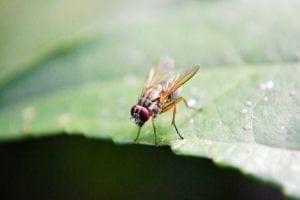According to a story from PR Newswire, the nonprofit biopharmaceutical company Medicines for Global Health recently announced that the U.S. Food and Drug Administration has approved a drug for the treatment of river blindness. The medicine in question is called moxidectin. The approval allows for the drug to be used in patients aged twelve or older.
River blindness, also known as onchocerciasis, is a disease caused by a parasitic worm from the species Onchocerca volvulus. Symptoms of this infection include severe itching, blindness, and bumps underneath the skin. The skin also develops a distinct texture that varies geographically. People get infected with the worm after being bitten by black flies from the genus Simulium. The name river blindness refers to the fact that these flies are usually found near water. It typically takes multiple bites before a person gets infected. It can be diagnosed by examining the skin bumps (which contain adult worms), and the larvae can also be seen in the eye. There is no vaccine and the best prevention is to avoid getting bitten. Doxycycline can weaken the worms by killing bacteria that are associated with them and the drug ivermectin can kill the larvae. To learn more about river blindness, click here.
Moxidectin has a prior history of medical use, but not on human patients. In the past, moxidectin has been used to kill a variety of parasitic worms that infect domesticated animals, such as horses, cattles, dogs, cats, and sheep. The approval of the drug for river blindness represents a notable advancement in the treatment of this often neglected disease. In clinical trials, moxidectin displayed superior results compared to ivermectin, which is the current treatment standard.
The Special Programme for Research and Training in Tropical Diseases, part of the World Health Organization, played a significant role in getting moxidectin approved for use in humans. River blindness is generally rare but it is quite prevalent in some African countries, and the approval will give them a new resource in controlling river blindness.
The Priority Review program from the FDA was a valuable factor as well, and helped provide the incentive to begin testing moxidectin; river blindness is only a major problem in developing countries and development for such diseases is less appealing to for-profit companies.






